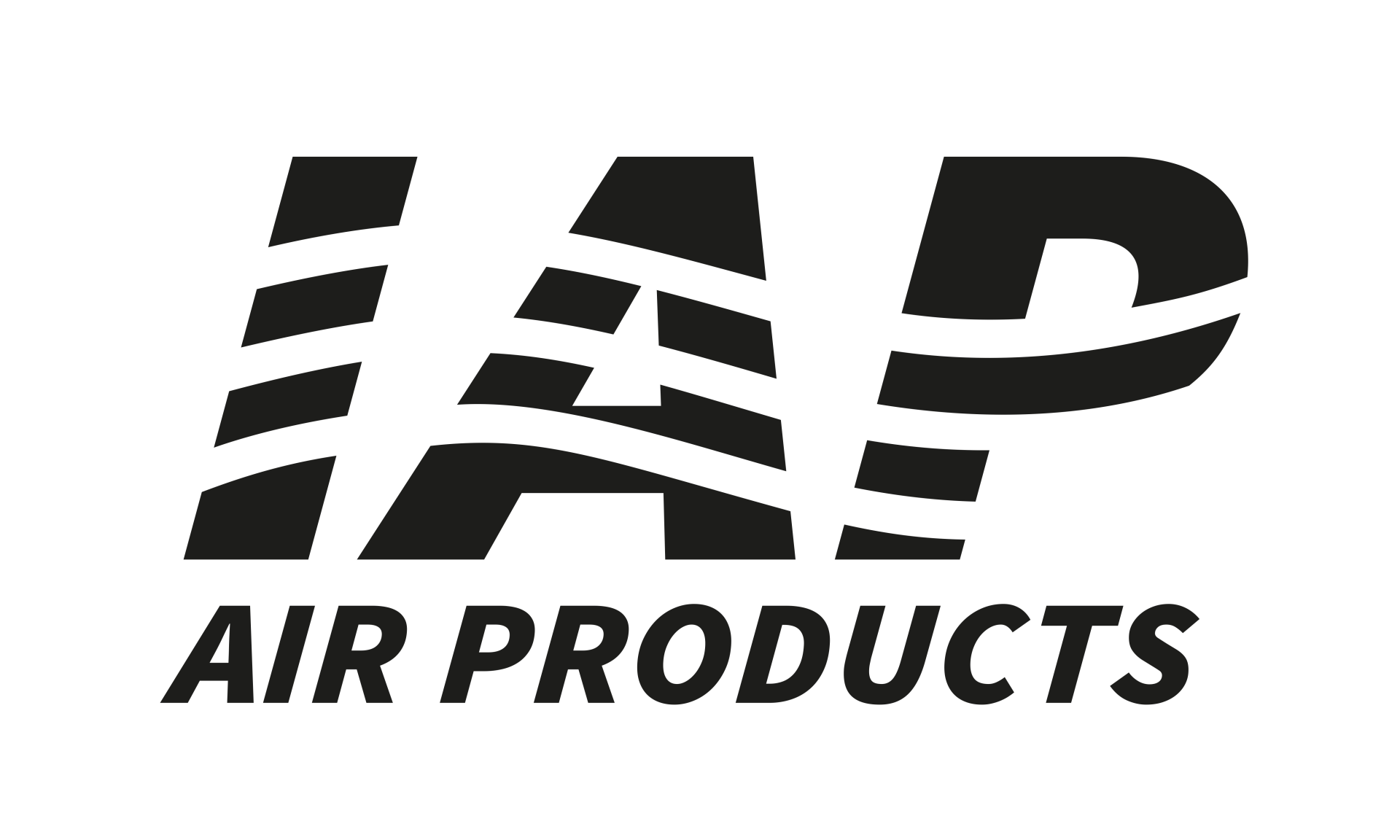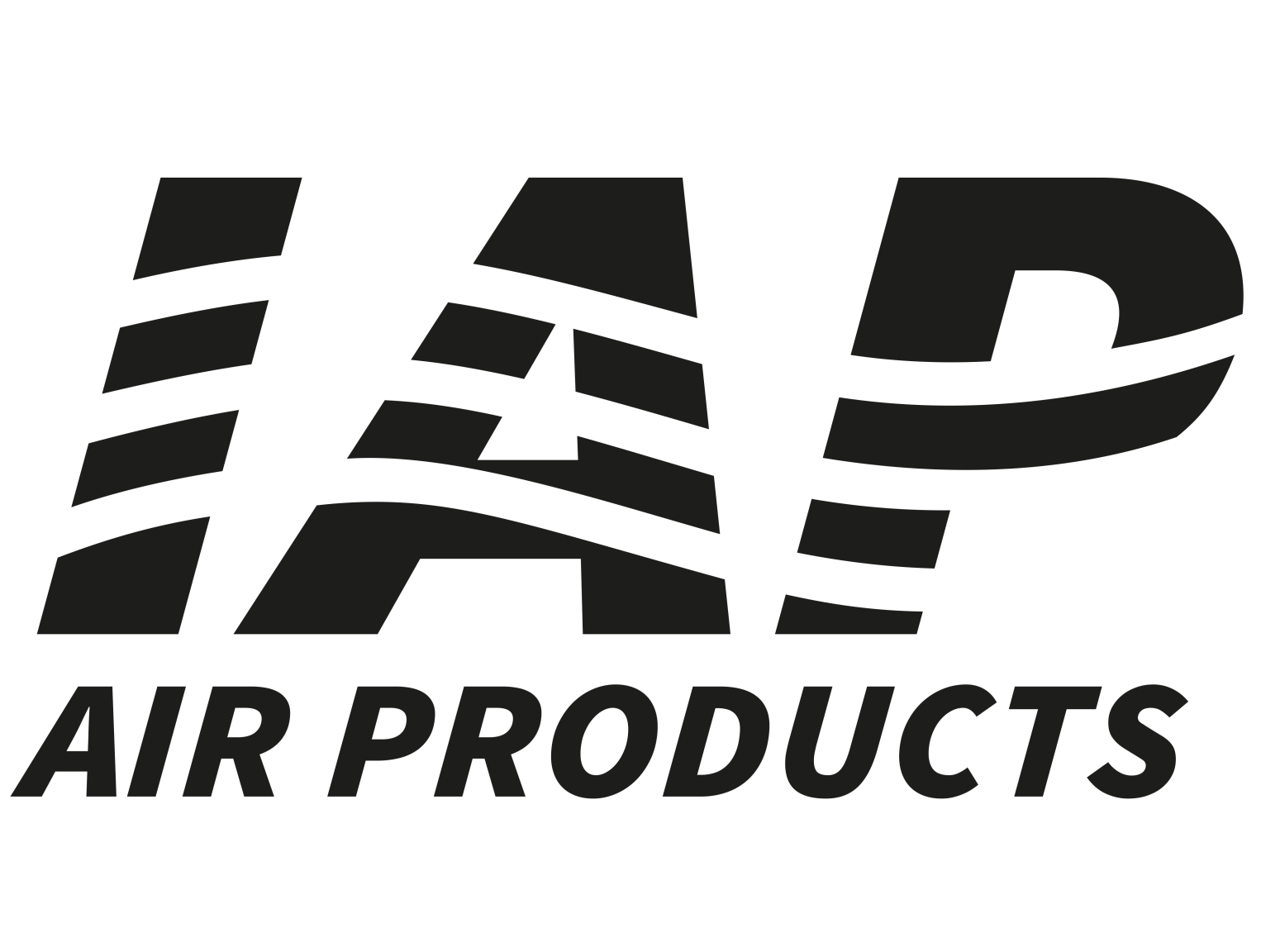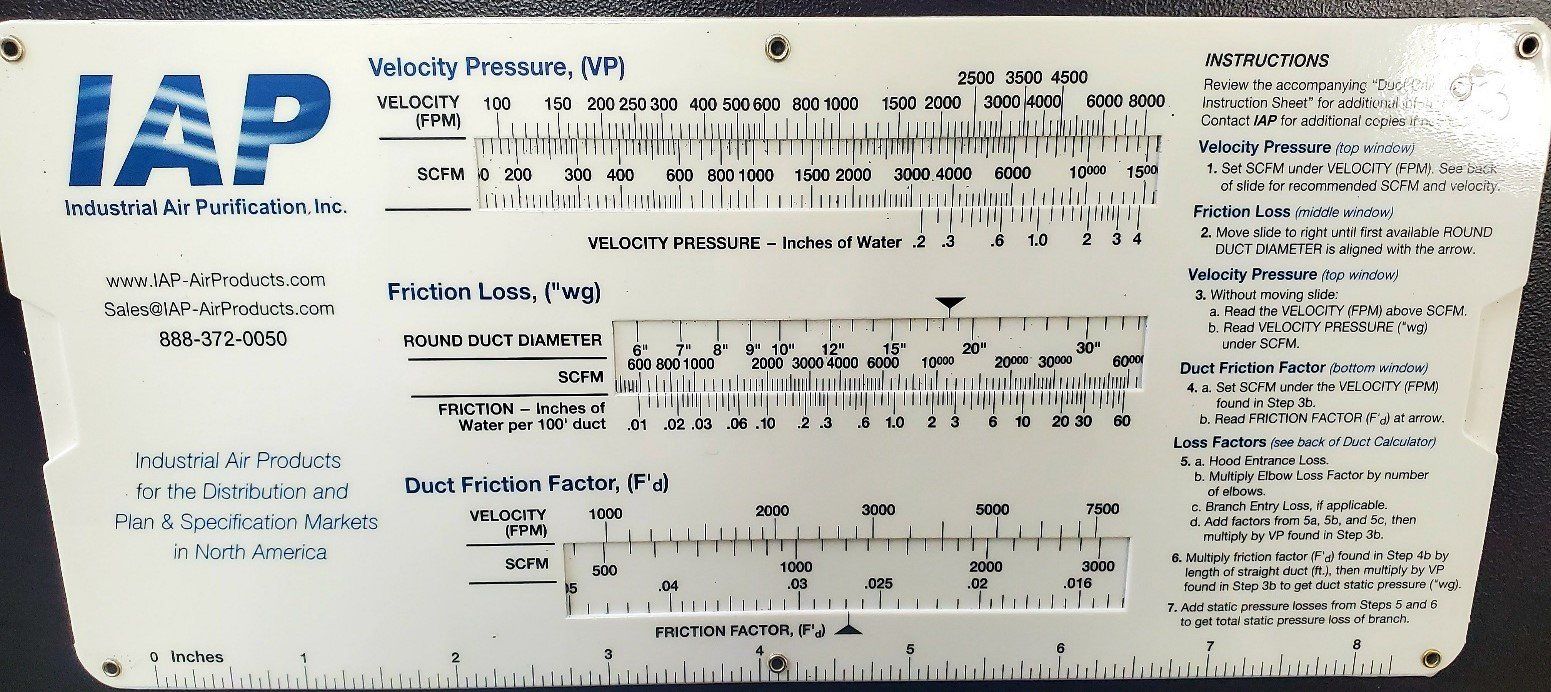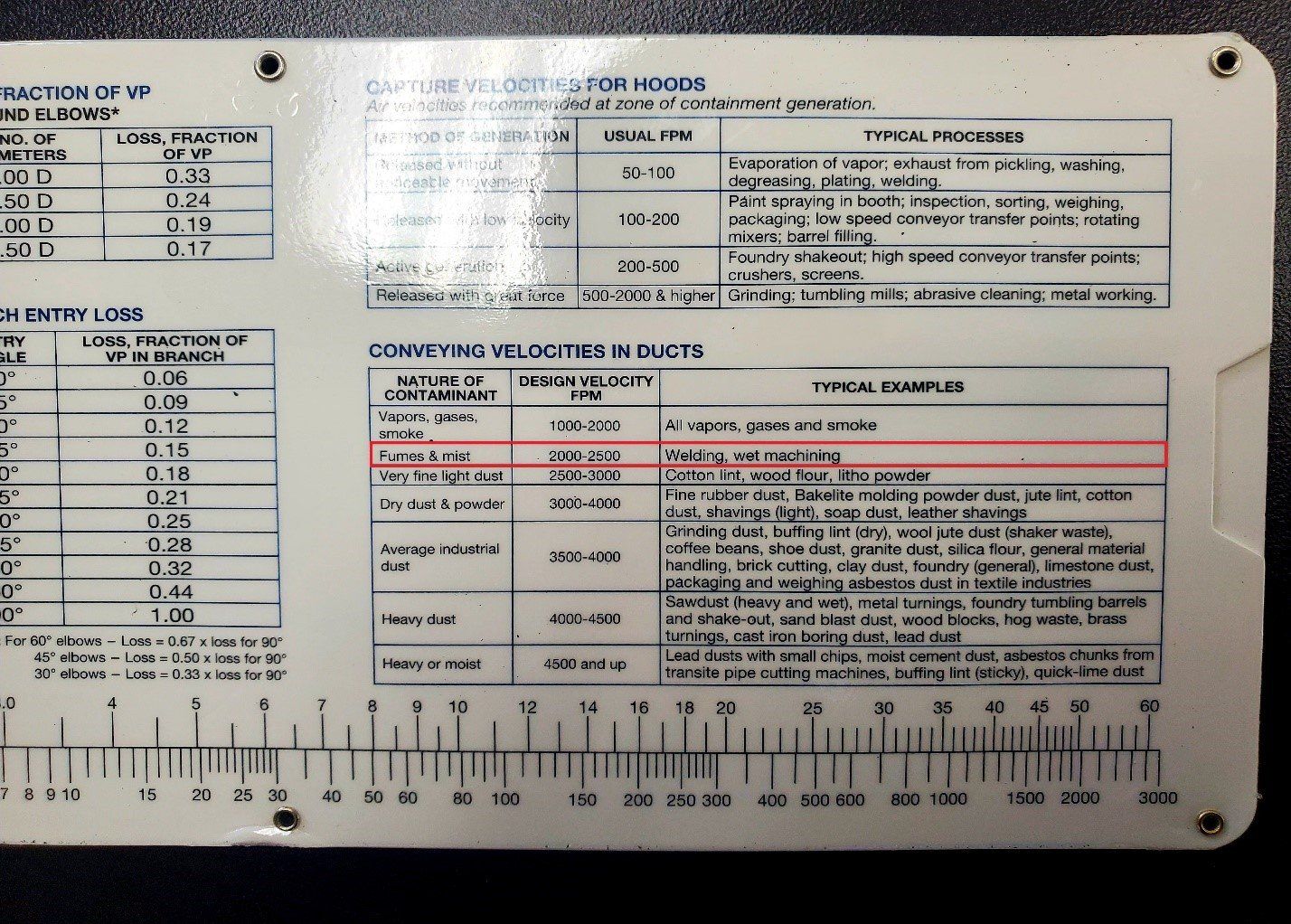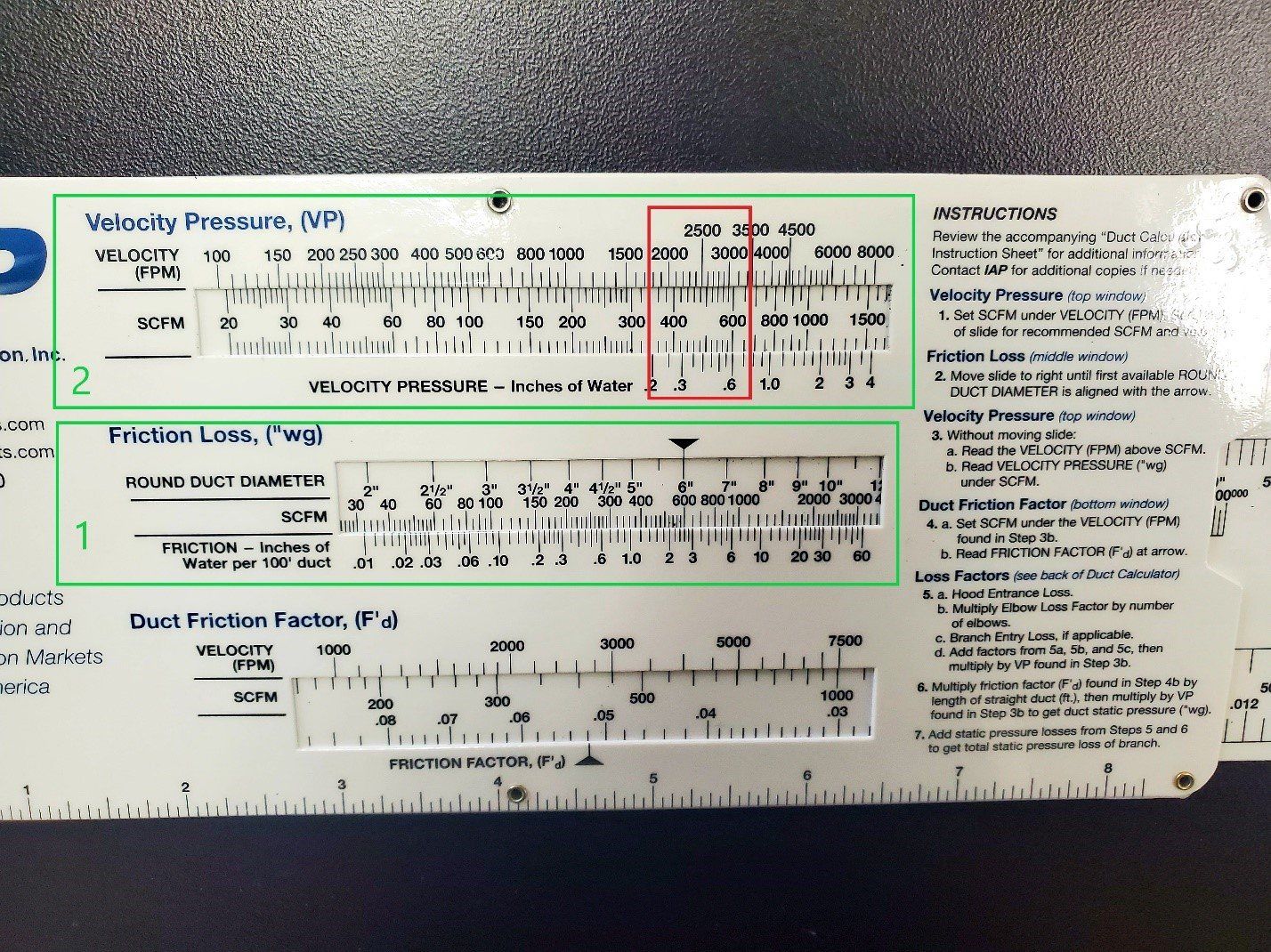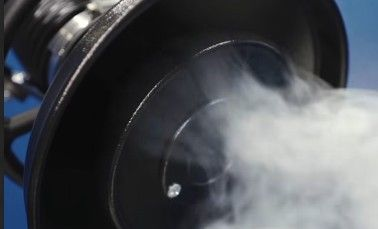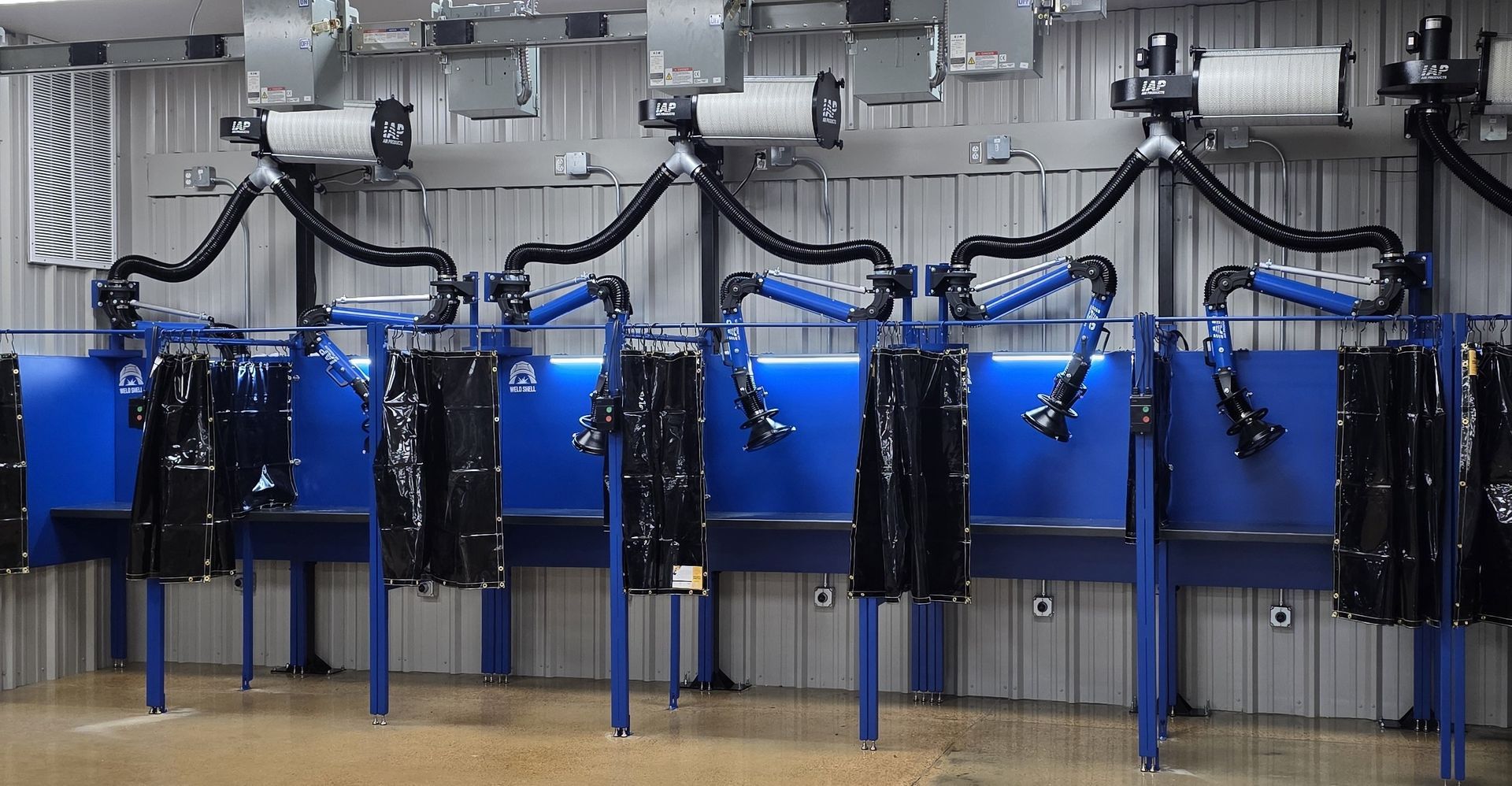With this information, we now need to go to the front of the Ductulator to do our calculations. There are 2 main sections on the front of the chart that we will be using (NOTATED AS 1 and 2 IN GREEN). With the Ductulator, you’ll notice that there is an inward piece that is able to be moved. As you move this, look at CHART 1. On the left-hand side of that chart, you’ll see the top section says “Round Duct Diameter”. Within this chart, you’ll also see a fixed arrow at the top. Knowing this, you’ll want to move the inward piece of the Ductulator so that the size of the Round Duct Diameter is matched up with the arrow and leave it. In the picture, we have already moved it to 6”.
Now, turn your attention to CHART 2. Take notice of left-hand side of the chart that says “VELOCITY (FPM)”. We previously figured out that the minimum FPM needed to capture welding smoke is 2000 – 2500. Drop down to the row immediately below and you’ll notice that this give you the CFM that correlates with the diameter duct you are using, and the FPM needed.
So how much CFM do you need? According to the chart, you need between 400-500 CFM minimum (at the source hood) to capture weld smoke with a 6” diameter arm.
